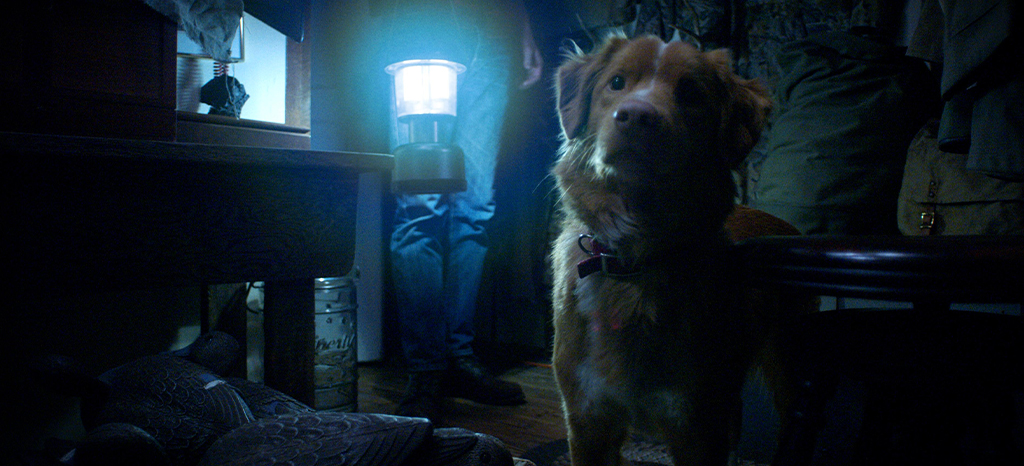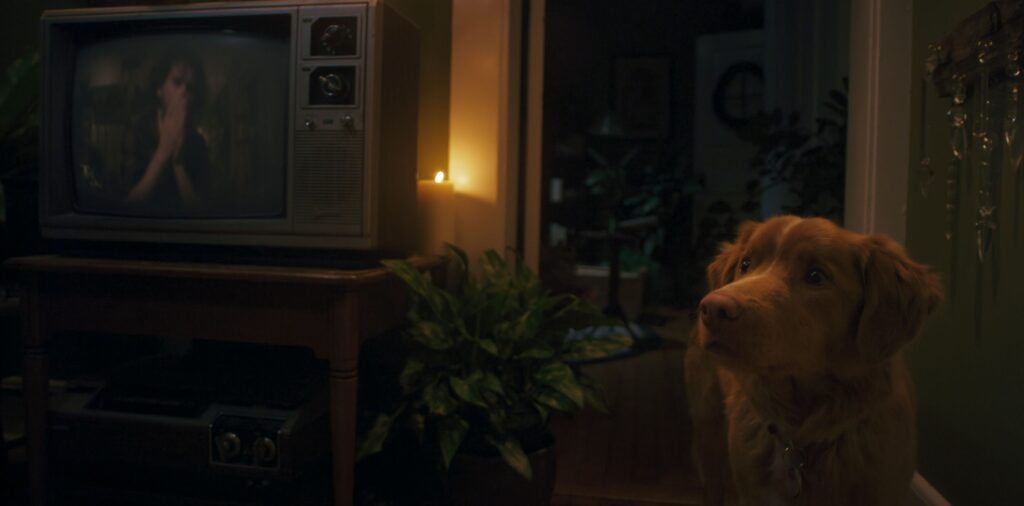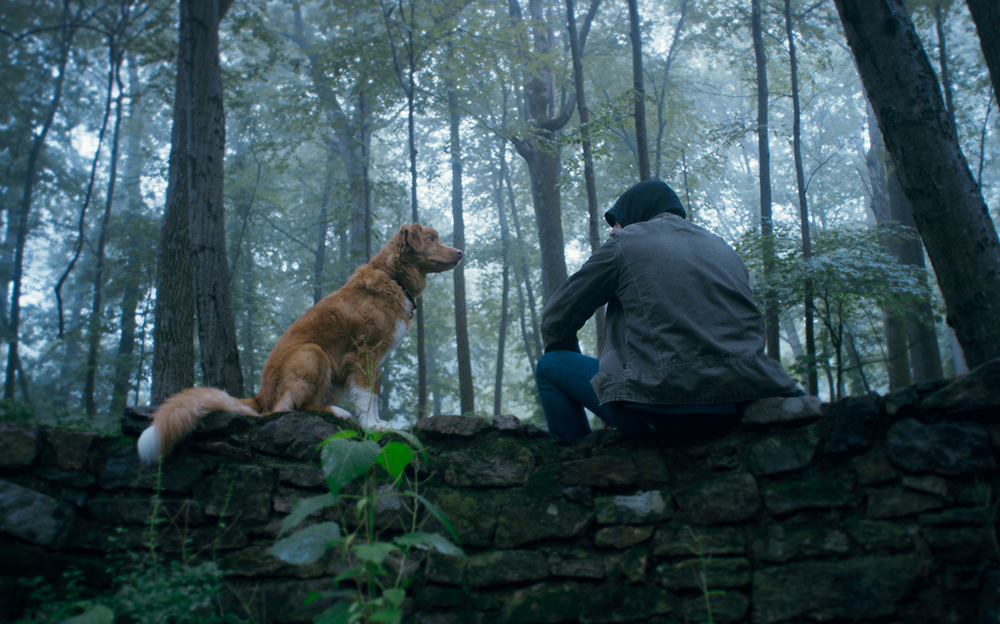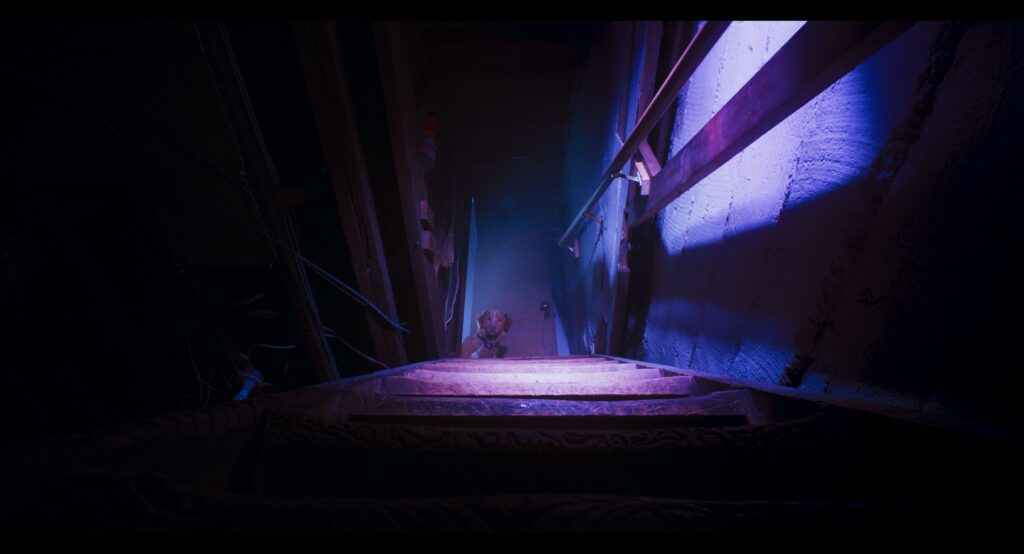
As the interview begins, director Ben Leonberg – speaking to us from his bedroom in New York – swivels his camera to reveal the star of Good Boy. Stretched luxuriously across the sheets is not a glamorous diva or heartthrob, but a handsome Nova Scotia Duck Tolling Retriever. Indeed, Leonberg’s Good Boy is an inventive horror film told entirely from a dog’s perspective, brought to life by his own pet, Indy. The story follows the brave pup as he moves to a rural family home with his owner, where dark supernatural forces threaten both him and the human he loves most.
Audiences are always on edge when dogs are in danger in horror films, which makes it surprising that this is the first time one has taken centre stage as a feature’s protagonist. Asked why he thinks no one else has attempted it, Leonberg explains, “It certainly started as kind of a crazy idea. I was like, ‘Why has no one done this before?’ The dog in horror movies always knows about the danger before the humans have caught on. Maybe no one’s done it because the concept is very unusual.”
 Unsurprisingly, the production of Good Boy was far from conventional. Leonberg says, “We shot a few hours a day, for 400 days, over three years. That schedule doesn’t work for any regular movie star unless they’re really game for an idea. The film was essentially an experiment.”
Unsurprisingly, the production of Good Boy was far from conventional. Leonberg says, “We shot a few hours a day, for 400 days, over three years. That schedule doesn’t work for any regular movie star unless they’re really game for an idea. The film was essentially an experiment.”
So far, the “experiment” has paid off, with Good Boy generating strong buzz and positive critical reactions. “We wanted to make a hard pivot on who the central character would be, and I think the challenge in doing that is why you haven’t seen this done before.”
Luckily, using Indy as the star has its advantages. Leonberg explains: “He doesn’t age like we do, he doesn’t need hair and makeup. He works for food. He’s my dog, so we’re on our own schedule.”
Making the film was a true family affair: Leonberg’s wife, Kari Fischer, served as producer, and much of the project was filmed inside their own home. Adapting their lives around the production brought its share of tension. Leonberg admits, “It was certainly a big investment and huge leap of faith – and love on my wife’s part – to go along with this. She’s not really a horror film fan, and this is the first movie she’s produced. Kari is actually a scientist, and now she’s a full filmmaker. I have to say, scientists can make movies a lot better than filmmakers can do science!
 “It was like solving a small segment of a puzzle every day. To get Indy’s performance was like inventing tricks, or teaching him new things we could use. I can’t stress enough that he has no idea he’s in a movie.”
“It was like solving a small segment of a puzzle every day. To get Indy’s performance was like inventing tricks, or teaching him new things we could use. I can’t stress enough that he has no idea he’s in a movie.”
Having an animal as the lead meant constantly thinking outside the box. Leonberg explains that one of the biggest innovations came while shooting the action scenes. “I had a stuffed animal made of Indy. I call it ‘Findy,’ like ‘Fake Indy.’ It’s a doll around the same size as him with the same colouring. It’s a dog, it’s a little uncanny… we used ‘Findy’ to stand in for lighting tests and to make sure where the camera needed to be. We’d use it like a puppet to map out some of the stunts you see in the film. That was a eureka moment that saved a bunch of scenes!”
Leonberg and his co-writer Alex Cannon were careful never to anthropomorphise Indy, letting him act like a real dog while still giving him a full character arc. “I love dog movies of all kinds,” Leonberg says. “There’s a quote from Jack London, who wrote White Fang and The Call of the Wild, that really sums up how we approached Indy:
“I did it in order to hammer into the average human understanding that these dog-heroes of mine were not directed by abstract reasoning, but by instinct, sensation, and emotion, and by simple reasoning.”
Leonberg elaborates: “There are a lot of literary advantages to a dog protagonist. Indy only understands what would make sense to a dog. There’s great opportunity for dramatic irony, where the audience knows more than him. Indy just thinks his master is upset, but the audience knows something much worse is going on. Indy doesn’t realise the danger he’s in.”
 The movie is no slouch in the horror department, with a sufficiently creepy antagonist that challenges Indy at every turn. Leonberg says, “We called it ‘The Shape,’ as an homage to John Carpenter’s Halloween, where in the script for that movie he never referred to his villain as Michael Myers. Most haunted house and ghost films are about mortality and the anxieties we have about death. We wanted to create one that made more sense to a dog, not a skeleton with a cloak and a scythe and an hourglass, but one just made of muck and goo. It’s still a specter of incoming death, but a bit more nature-inflected.
The movie is no slouch in the horror department, with a sufficiently creepy antagonist that challenges Indy at every turn. Leonberg says, “We called it ‘The Shape,’ as an homage to John Carpenter’s Halloween, where in the script for that movie he never referred to his villain as Michael Myers. Most haunted house and ghost films are about mortality and the anxieties we have about death. We wanted to create one that made more sense to a dog, not a skeleton with a cloak and a scythe and an hourglass, but one just made of muck and goo. It’s still a specter of incoming death, but a bit more nature-inflected.
“That was certainly very messy to pull off. But one of the good things about having a dog lead is that the most challenging hair and makeup we had to do was have him roll around in the mud. There’s a scene where he disappears, then shows back up covered in mud. Audiences always gasp and are so horrified. If you think about it for just a little bit, you’ll realise that getting a dog to roll around in the mud is no hardship at all.”
Good Boy is in cinemas around Australia now.









